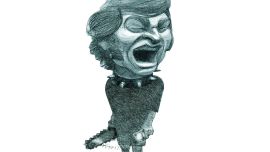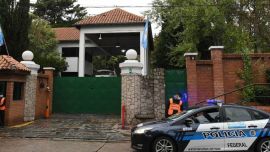While World Cup fever continues to build in Buenos Aires and across Argentina, over in Chile and far away from the headlines the nation’s football has another honourable representative. The Albiceleste’s women’s side is fighting for the Copa América title, and continuing a process of growth that has been slow and painstaking over the last 25 years.
Led by UAI Urquiza star Florencia Bonsegundo, Argentina sailed out of the five-team Group B to the final stage. The preliminary stage saw the likes of Bonsegundo and star striker Sole Jaimes on top form, helping the team to win three games out of four, losing only to eternal women’s heavyweights Brazil.
Colombia were then downed 3-1 for a perfect start to the deciding phase, although Brazil struck again on Thursday with a 3-0 win, a result that leaves the defending champions in pole position to retain the trophy.
Judging by the sparse investment and even scanter level of attention Argentina’s women receive in their own nation, even getting this far marks a massive achievement. Less than a year ago the national team went to the extreme of calling a strike in protest at the lack of resources received from the Argentine Football Assocation (AFA) and what was signalled in a statement as the “long-term structural problems” suffered by the players.
A sign of just how neglected the discipline has historically been is demonstrated by the meagre per diems allotted prior to the strike, one of the principal reasons for action: each player while on international duty received a miserly 150 pesos per day, a disgraceful sum compared to the astronomical figures the likes of Messi and his team-mates pocket for representing their nation. From 2014 to 2017 the team was not even active, the crisis-ridden AFA alleging a lack of budget to support a women’s programme while spending millions on the male Albiceleste team.
The situation is far from resolved. Argentina led a different type of protest prior to victory over Chile, taking the traditional team photo with their hands cupped behind their ears in a gesture designed to draw attention to their issues and force the AFA to listen. But it is not just for economic reasons that the side feel they are disadvantaged: kit suppliers Adidas recently chose to unveil the new women’s shirt using models instead of players, another snub that reinforces the perceived status of second- class citizens. “We were all surprised because we found out on social networks. It hurt us, we are the ones who represent women’s football in Argentina and feel we have not been valued,” Bonsegundo explained to TN. “We never presented our shirts and it would have been nice for us to be its face.”
The women’s game in Argentina has historically lagged far behind its male counterpart. The national team’s first game came as late as 1993, seven years after rivals Brazil made their début. Brazil have also won six of the seven Copas América to date – though Argentina was the sole nation to break that trend with a stunning win in 2006. Their neighbours to the north, as in the United States and several other nations, boast a professional women’s league while the Albiceleste’s players continue as amateurs, although Jaimes, who plays in China and US-based Estefania Bonini are examples of players who have managed to make a living out of the game, albeit by moving abroad.
FUTURE OF THE GAME
Domestically the scene is dominated by a handful of clubs who have deigned to lend time and resources to develop a women’s football programme. Boca Juniors and River Plate lead the way, far outstripping their Primera rivals in both resources and success on the field; UAI Urquiza too have shown the benefits of investing heavily in the women’s game, with three national titles and no less than seven representatives, including captain Bonsegundo, in the current Argentina squad. But one thing all clubs have in common is a criminal lack of exposure, particularly compared to Brazil where stars like the legendary Marta, the Selecao’s woman of the match on Thursday, have cultivated both a national and international following.
There are nevertheless several reasons to be hopeful in the future. The growth of women’s football at an informal or semi-formal level in Buenos Aires has been rapid in recent years, both in gender-specific competitions and also in mixed games, now a fixture of the countless five-a-side ‘canchitas’ that dot the capital and its surroundings. That grassroots support has been mirrored by (minor) advances higher up: South American federation CONMEBOL now stipulate that any team wishing to enter the Libertadores or Sudamericana champions from 2019 onwards must have a women’s team operative. Social programmes in some of Argentina’s most deprived neighbourhoods have also encouraged vulnerable young women to embrace sport, in many cases with stunning success. The most famous example is the ‘La Nuestra’ foundation in Retiro’s notorious Villa 31 shantytown, which in 2017 celebrated its 10th anniversary and in 2011 provided Argentina’s representatives in the Homeless World Cup.
The Albiceleste’s current exploits in Chile have also helped to raise awareness, opening many observers eyes to the world of international football outside Messi’s latest comings and goings. But it is only the beginning, and if the Copa América adventure is not followed by a sustained effort to improve the structure and financial wellbeing of the women’s game, the likes of Bonsegundo, Jaimes and Bonini will continue to be neglected and ignored.




















Comments